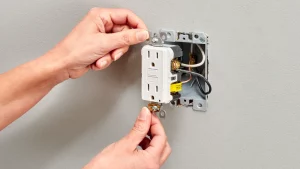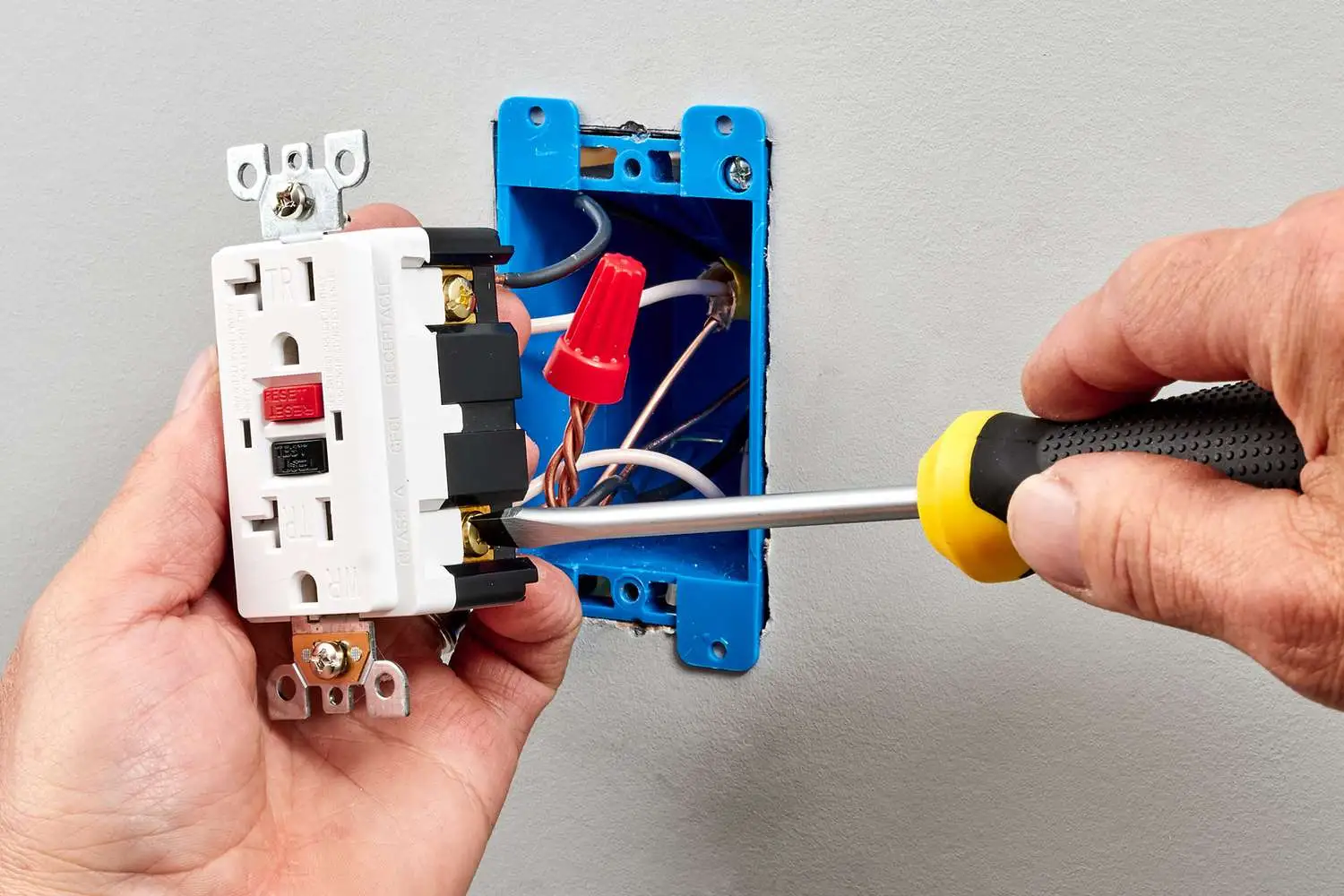Before connecting a handmade lamp, understanding GFCI installation is crucial for safety. Missteps in this process can lead to malfunctions or hazardous situations. Key areas of concern include proper wiring, securing outlets, and guaranteeing compliance with electrical codes. Awareness of common GFCI installation mistakes is fundamental for effective operation. Exploring these pitfalls can help prevent potential dangers and guarantee a safe environment for using electrical devices.
Key Takeaways
- Ensure proper connection to the power source by correctly identifying line and load terminals on the GFCI outlet.
- Securely tighten screws to prevent loose connections, which can lead to malfunctions or hazards.
- Test the GFCI outlet using the “Test” button before plugging in your handmade lamp to ensure it functions properly.
- Regularly check the GFCI outlet monthly to confirm it trips and resets correctly, indicating a safe installation.
- Follow local electrical codes and manufacturer instructions to avoid liability and ensure safe operation of your handmade lamp.
Understanding the Importance of GFCI Protection
Electrical safety is a paramount concern in any household, particularly when it comes to protecting against electrical shocks and potential fire hazards. Ground Fault Circuit Interrupters (GFCIs) are critical devices designed to prevent these dangers by monitoring electrical flow and interrupting it when an imbalance is detected. This is especially important in areas with moisture, such as kitchens and bathrooms, where the risk of shock is heightened. GFCIs are not just regulatory requirements but essential tools that enhance safety for all household members. Proper installation and maintenance of GFCIs greatly reduce the likelihood of electrical incidents, thereby fostering a secure living environment. Understanding the importance of GFCI protection is crucial for anyone engaged in electrical work or home improvement projects.
Common GFCI Installation Mistakes to Avoid
While installing a Ground Fault Circuit Interrupter (GFCI), it is crucial to be aware of common GFCI installation mistakes that can compromise safety and functionality. One prevalent error is failing to connect the GFCI to the correct power source, which can render it ineffective. In addition, neglecting to properly secure the outlet and cover plate may lead to potential hazards. Inadequate understanding of the wiring configuration can also result in reversed polarity, posing a serious risk. Moreover, disregarding local electrical codes can lead to non-compliance and increased liability. Finally, overlooking the importance of testing the GFCI after installation guarantees that it functions correctly, a critical step often omitted in the rush to finalize the installation.
Proper Wiring Techniques for GFCI Outlets
To guarantee peak performance and safety, proper wiring techniques for GFCI outlets must be adhered to during installation. The first step involves identifying the line and load terminals on the GFCI, confirming that incoming power connects to the line side. Next, it is vital to strip wires to the appropriate length, typically around ¾ inch, to guarantee secure connections without excess wire exposed. Use the appropriate gauge wire, generally 12 or 14 AWG, depending on circuit requirements. Tightening screws securely is essential to prevent loose connections. Finally, verify that the GFCI outlet is grounded correctly to enhance safety. By avoiding common GFCI installation mistakes, one can achieve a reliable and safe electrical setup for their handmade lamp.
Testing Your GFCI: Ensuring Safe Operation
How can one guarantee the proper functioning of a GFCI outlet? Regular testing is essential to guarantee safe operation. Most GFCI outlets include a “Test” and “Reset” button. To test, simply press the “Test” button; this should trip the outlet, cutting off power. The “Reset” button must then be pressed to restore power. It is recommended to perform this test monthly to detect any potential malfunctions. Additionally, if the outlet does not trip or reset, it may indicate a wiring issue or a defective unit. Addressing these concerns promptly prevents possible hazards. By being vigilant about testing, individuals can considerably reduce the likelihood of common GFCI installation mistakes and guarantee a safe environment for their handmade lamps.
Best Practices for DIY GFCI Installation
When undertaking a DIY GFCI installation, adhering to best practices is vital for guaranteeing safety and functionality. First, turn off the power at the breaker box to prevent an electric shock. Next, use a voltage tester to confirm that the circuit is de-energized. Properly identify the line and load wires, assuring correct connections to avoid common GFCI installation mistakes. It is advisable to use a GFCI outlet rated for the specific application, particularly in wet or damp areas. Additionally, follow the manufacturer’s instructions meticulously, as they provide critical information for installation. Finally, after completing the installation, conduct a test of the GFCI to verify it functions correctly, thereby promoting a safe environment for utilizing that handmade lamp.
Frequently Asked Questions
Can I Install a GFCI Outlet in a Bathroom or Kitchen?
Installing a GFCI outlet in bathrooms and kitchens is not only permissible but also essential for safety. These locations require GFCI protection to prevent electrical shock, making proper installation critical for user safety and compliance.
How Do I Know if My GFCI Is Working Properly?
To determine if a GFCI is functioning correctly, one should press the “Test” button; the reset button should pop out. If the outlet remains unresponsive, replacement or professional inspection is recommended to guarantee safety.
What Tools Do I Need for GFCI Installation?
For GFCI installation, essential tools include a voltage tester, wire strippers, screwdrivers (flathead and Phillips), pliers, and a drill. These tools guarantee a safe, efficient installation, minimizing the risk of common GFCI installation mistakes.
Is It Safe to Install a GFCI Outlet Outdoors?
Installing a GFCI outlet outdoors is safe when done correctly. It protects against electrical shock by monitoring current flow. Proper weatherproofing and adhering to local codes are essential to guarantee safety and functionality in outdoor settings.
Can I Replace a Regular Outlet With a GFCI Outlet?
Replacing a regular outlet with a GFCI outlet is permissible and enhances safety by providing ground fault protection. This modification is especially beneficial in areas prone to moisture, reducing the risk of electrical shock considerably.
Conclusion
In conclusion, avoiding common GFCI installation mistakes is essential for ensuring electrical safety and functionality. Proper identification of line and load terminals, secure mounting, and adherence to local codes are fundamental to effective installation. Regular testing of GFCI outlets further safeguards against potential hazards. By following best practices and employing correct wiring techniques, individuals can confidently install GFCI outlets, ensuring their handmade lamps and other devices operate safely and efficiently.
You May Also Like:


